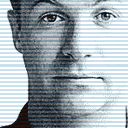22 April 2003, Paul Schmelzer, AlterNet
Tune into the evening news on Madison, Wisconsin's Fox TV affiliate and behold the future of local news. In the program's concluding segment, "The Point," Mark Hyman rants against peace activists ("wack-jobs"), the French ("cheese-eating surrender monkeys"), progressives ("loony left") and the so-called liberal media, usually referred to as the "hate-America crowd" or the "Axis of Drivel." Colorful, if creatively anemic, this is TV's version of talk radio, with the precisely tanned Hyman playing a second-string Limbaugh.
Fox 47's right-wing rants may be the future of hometown news, but -- believe it or not -- it's not the program's blatant ideological bias that is most worrisome. Here's the real problem: Hyman isn't the station manager, a local crank, or even a journalist. He is the Vice President of Corporate Communications for the station's owner, the Sinclair Broadcast Group. And this segment of the local news isn't exactly local. Hyman's commentary is piped in from the home office in Baltimore, MD, and mixed in with locally-produced news. Sinclair aptly calls its innovative strategy "NewsCentral" - it is very likely to spell the demise of local news as we know it.
Like many a media empire, Sinclair grew through a combination of acquisitions, clever manipulations of Federal Communications Commission (FCC) rules, and considerable lobbying campaigns. Starting out as a single UHF station in Baltimore in 1971, the company started its frenzied expansion in 1991 when it began using "local marketing agreements" as a way to circumvent FCC rules that bar a company from controlling two stations in a single market. These "LMAs" allow Sinclair to buy one station outright and control another by acquiring not its license but its assets. Today, Sinclair touts itself as "the nation's largest commercial television broadcasting company not owned by a network." You've probably never heard of them because the 62 stations they run -- garnering 24 percent of the national TV audience -- fly the flags of the networks they broadcast: ABC, CBS, NBC, FOX, and the WB.
TV Barn's Mark Jeffries calls Sinclair the "Clear Channel of local news," a reference to the San Antonio, Texas, media giant that has grown from 40 to more than 1,200 stations today thanks to the 1996 Telecommunications Act, which relaxed radio ownership rules. But the parallels extend beyond their growth strategies. Jeffries describes Sinclair as having a "fiercely right-wing approach that makes Fox News Channel look like a model of objectivity," while Clear Channel is best known for sponsoring pro-war "Rallies for America" during the Iraq conflict. And like Clear Channel's CEO L. Lowry Mays -- a major Republican donor and onetime business associate of George W. Bush -- the Sinclair family, board, and executives ply the GOP with big money. Since 1997, they have donated well over $200,000 to Republican candidates.
Sinclair's news department also takes a page out of Clear Channel's book of non-localized programming. According to Sinclair's website, NewsCentral is a "revolutionary news model" that introduces "local news in programming in markets that otherwise could not support news." Begun in 2002, it's being tested in five not-so-small markets: Minneapolis, Flint (MI), Oklahoma City (OK), Raleigh (NC), and Rochester (NY). (Hyman's segment, "The Point," however, is aired on all 62 of its stations.) In these five cities, the hour-long newscast combines local broadcasting with prepackaged news. To maintain the appearance of local news, the Baltimore on-air staff is coached on the intricacies of correct local pronunciations. Or the weatherman, safely removed from the thunderstorms in, say, Minneapolis, will often engage in scripted banter with the local anchor to maintain the pretense: "Should I bring an umbrella tomorrow, Don?" "You bet, Hal, it looks pretty ugly out there..."
FULL ARTICLE ...







